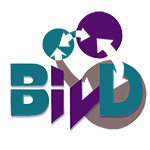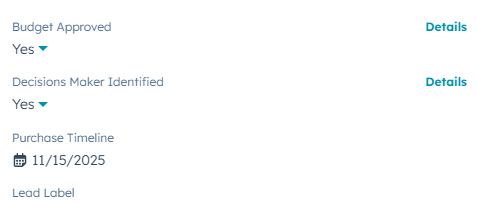Know Exactly When a Lead Becomes an Opportunity
How to Define the Trigger, Automate the Hand-Off, and End the Guesswork
Every sales team says they “qualify leads.” But if you ask when a lead officially becomes an opportunity — you’ll get five different answers.
That gray area between interest and intent causes endless confusion, messy pipelines, and marketing-to-sales tension. The fix? A clear definition and one smart automation.
Why You Need a Defined Lead-to-Opportunity Trigger
MarketingSherpa once reported that only about 27% of B2B leads passed from marketing to sales are actually qualified. That means roughly three out of four “leads” aren’t ready to buy. Without a shared definition of “qualified,” sales wastes time, and marketing’s numbers look inflated.
As one alignment study put it, “Organizations with aligned sales and marketing teams are 67% more effective at closing deals.”
The takeaway: clarity beats volume. If both teams agree on what “qualified” means, you can automate the hand-off and get consistent data from lead through deal.
Build Your Qualification Criteria
Start with three universal indicators of qualification — the criteria that separate a curious visitor from a genuine opportunity.
The Three Core Qualification Fields
Budget
- Question to ask: Do they have funding or approval to move forward?
Why it matters: No budget = no deal. A quick “Budget Approved?” yes/no checkbox stops wishful thinking early.
Decision-Maker / Authority
- Question to ask: Are we talking to the person who can sign or someone who influences the decision?
Why it matters: Without authority, even great opportunities stall in “maybe” territory.
Need and Timing
- Question to ask: Do they have a clear need and a defined timeframe?
Why it matters: Urgency transforms interest into action. If there’s no timeline, it’s not yet an opportunity.
“A qualified lead has both the motivation and the means to buy — not just curiosity.”
— Common wisdom from sales alignment frameworks like BANT
How to Set This Up in HubSpot
Step 1: Add the Properties
Create these three custom fields on your Lead object:
-
- Budget Approved? (Yes/No)
- Decision Maker Identified? (Yes/No)
- Purchase Timeline (Dropdown or Date picker)
- Then, add a simple workflow that property that auto-calculates and moves the lead stage to “qualified” when all three boxes are checked.
Step 2: Make Them Visible
Display these properties prominently on the Lead record sidebar or a dedicated “Qualification Panel.”
Step 3: Automate the Handoff
Build a workflow that creates a Deal (or Opportunity) automatically when a lead is fully qualified.
Workflow Logic:
Trigger: When Qualified to Buy = Yes
Actions:
Create a new Deal in Pipeline → Stage = Opportunity / Qualification
Associate the Deal with the Contact and Company
Notify the assigned rep via Slack/Teams or email
This workflow takes less than 10 minutes to build, but it eliminates manual data entry and keeps your pipeline consistent.
Why This Works
When you define exactly when a lead becomes an opportunity:
- Sales focuses on ready buyers instead of chasing cold leads.
- Marketing gets cleaner feedback — no more “bad leads” arguments.
- Reports actually mean something, because every opportunity enters the funnel at the same level of qualification.
In one client example, automating this process cut manual deal creation by over 60% and completely removed the daily “is this one ready yet?” Slack debates.
Try It in Your Own Portal
- Define your three qualification properties (Budget, Authority, Need/Timeline).
- Add a “Qualified to Buy” property on the Lead object.
- Build the workflow that creates a Deal when all boxes are checked.
Test it once — then watch how much cleaner your pipeline becomes.
That’s one thing that works.
Want to see what other tips will benefit your team? Schedule a meeting with me.
How to Define the Trigger, Automate the Hand-Off, and End the Guesswork
Every sales team says they “qualify leads.” But if you ask when a lead officially becomes an opportunity — you’ll get five different answers.
That gray area between interest and intent causes endless confusion, messy pipelines, and marketing-to-sales tension. The fix? A clear definition and one smart automation.
Why You Need a Defined Lead-to-Opportunity Trigger
MarketingSherpa once reported that only about 27% of B2B leads passed from marketing to sales are actually qualified. That means roughly three out of four “leads” aren’t ready to buy. Without a shared definition of “qualified,” sales wastes time, and marketing’s numbers look inflated.
As one alignment study put it, “Organizations with aligned sales and marketing teams are 67% more effective at closing deals.”
The takeaway: clarity beats volume. If both teams agree on what “qualified” means, you can automate the hand-off and get consistent data from lead through deal.
Build Your Qualification Criteria
Start with three universal indicators of qualification — the criteria that separate a curious visitor from a genuine opportunity.
The Three Core Qualification Fields
Budget
- Question to ask: Do they have funding or approval to move forward?
Why it matters: No budget = no deal. A quick “Budget Approved?” yes/no checkbox stops wishful thinking early.
Decision-Maker / Authority
- Question to ask: Are we talking to the person who can sign or someone who influences the decision?
Why it matters: Without authority, even great opportunities stall in “maybe” territory.
Need and Timing
- Question to ask: Do they have a clear need and a defined timeframe?
Why it matters: Urgency transforms interest into action. If there’s no timeline, it’s not yet an opportunity.
“A qualified lead has both the motivation and the means to buy — not just curiosity.”
— Common wisdom from sales alignment frameworks like BANT
How to Set This Up in HubSpot
Step 1: Add the Properties
Create these three custom fields on your Lead object:
-
- Budget Approved? (Yes/No)
- Decision Maker Identified? (Yes/No)
- Purchase Timeline (Dropdown or Date picker)
- Then, add a simple workflow that property that auto-calculates and moves the lead stage to “qualified” when all three boxes are checked.
Step 2: Make Them Visible
Display these properties prominently on the Lead record sidebar or a dedicated “Qualification Panel.”
[Insert Screenshot Placeholder: Lead Qualification Panel]
Step 3: Automate the Handoff
Build a workflow that creates a Deal (or Opportunity) automatically when a lead is fully qualified.
Workflow Logic:
Trigger: When Qualified to Buy = Yes
Actions:
Create a new Deal in Pipeline → Stage = Opportunity / Qualification
Associate the Deal with the Contact and Company
Notify the assigned rep via Slack/Teams or email
[Insert Screenshot Placeholder: Workflow showing Qualified to Buy → Create Deal action]
This workflow takes less than 10 minutes to build, but it eliminates manual data entry and keeps your pipeline consistent.
Why This Works
When you define exactly when a lead becomes an opportunity:
- Sales focuses on ready buyers instead of chasing cold leads.
- Marketing gets cleaner feedback — no more “bad leads” arguments.
- Reports actually mean something, because every opportunity enters the funnel at the same level of qualification.
In one client example, automating this process cut manual deal creation by over 60% and completely removed the daily “is this one ready yet?” Slack debates.
Try It in Your Own Portal
- Define your three qualification properties (Budget, Authority, Need/Timeline).
- Add a “Qualified to Buy” property on the Lead object.
- Build the workflow that creates a Deal when all boxes are checked.
Test it once — then watch how much cleaner your pipeline becomes.
That’s one thing that works.
Want to see what other tips will benefit your team? Schedule a meeting with me.
October 22, 2025
References
- MarketingSherpa. (2011). B2B Marketing Benchmark Report.
Retrieved from https://content.marketingsherpa.com/data/public/reports/benchmark-reports/BMR-B2B_Marketing.pdf - LXA Hub. (2023). Sales and Marketing Alignment Stats and Trends.
Retrieved from https://www.lxahub.com/stories/sales-and-marketing-alignment-stats-and-trends-2023 - FormStory. (n.d.). Lead Qualification: What It Is and How to Do It Right.
Retrieved from https://formstory.io/learn/lead-qualification - Smart Insights. (n.d.). Lead Qualification Criteria: Theory and Practice.
Retrieved from https://www.smartinsights.com/lead-generation/lead-generation-strategy/lead-qualification-criteria-theory-practice - Lake One Digital. (2024). Sales and Marketing Alignment Statistics.
Retrieved from https://lakeone.io/blog/sales-and-marketing-alignment-statistics




